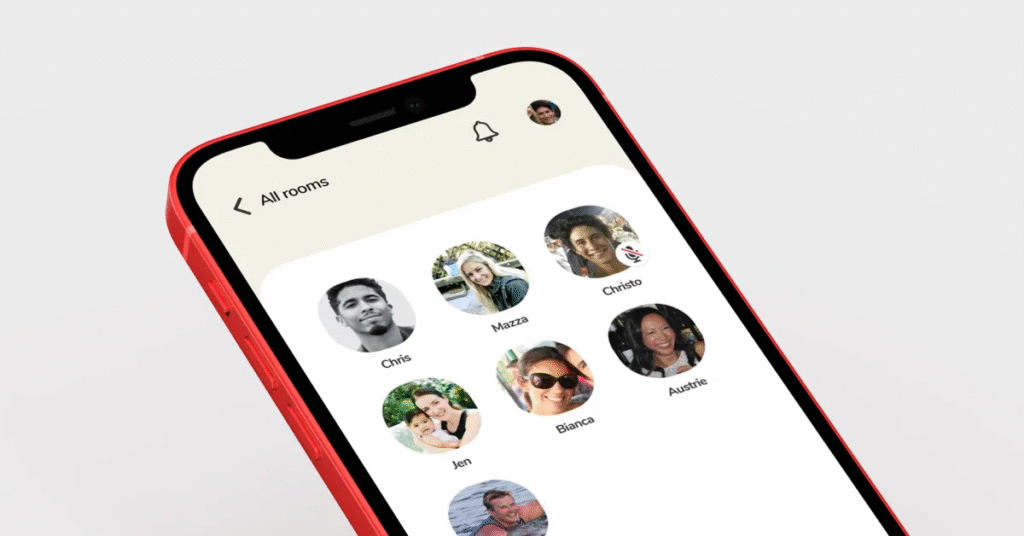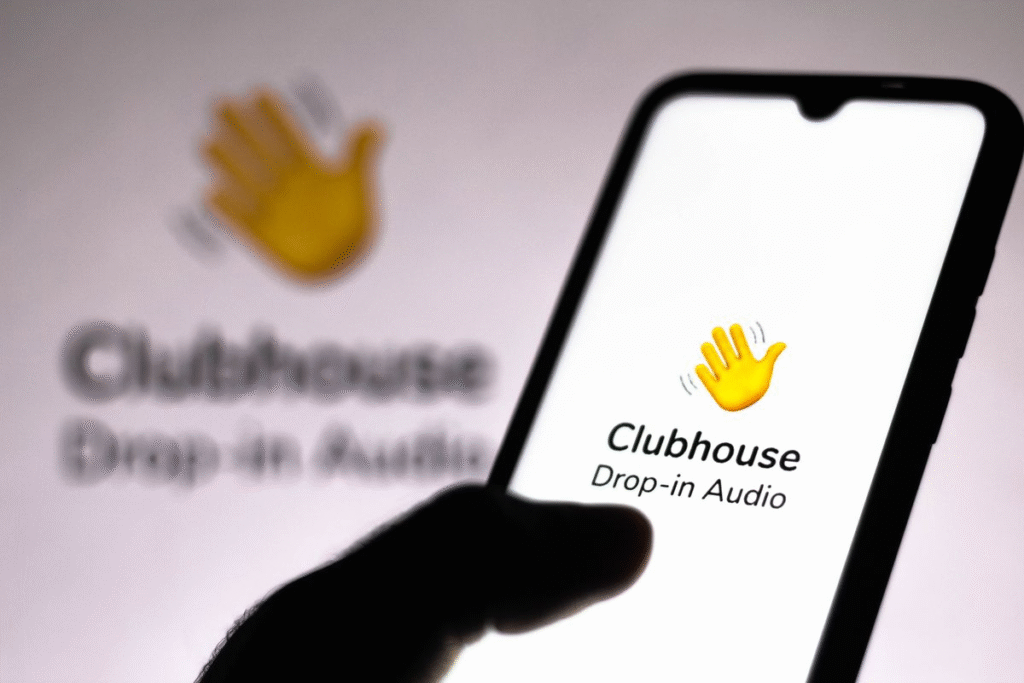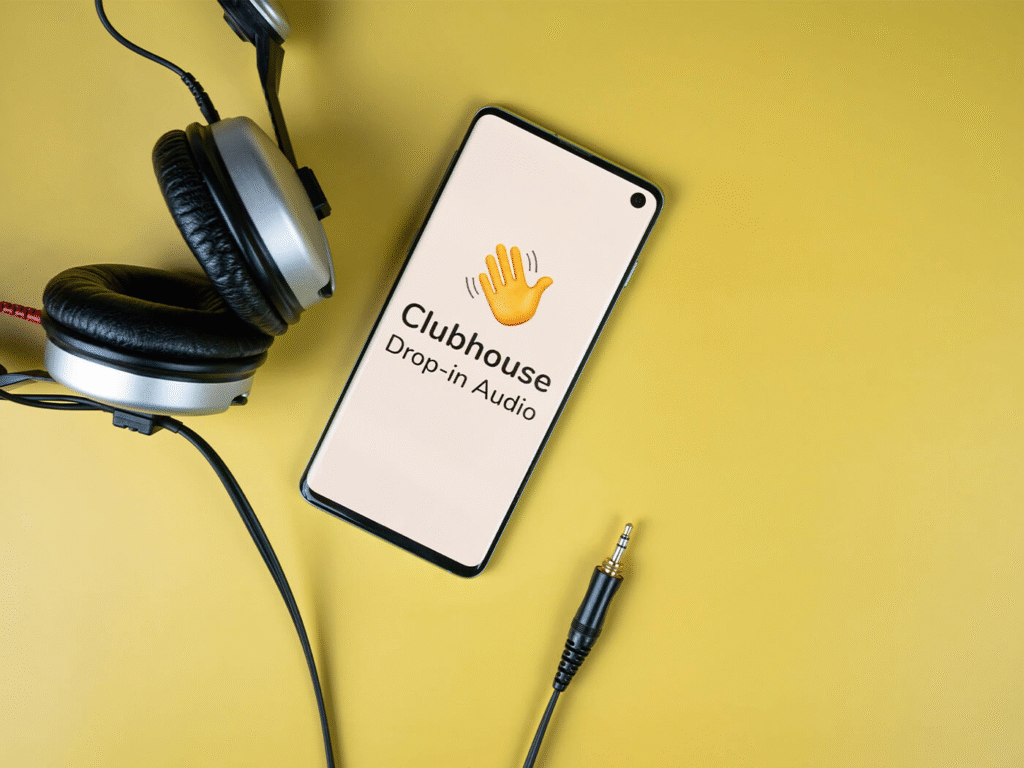Ever wondered how to make money on Clubhouse by simply talking to people live? If you’re active in 2025, it’s easier than ever to turn conversations into cash. This guide shows you how to turn your voice into income using Clubhouse’s built-in tools and smart strategies.
From brand deals to affiliate traffic, Clubhouse creators are generating up to $8,000 per month by building loyal audio communities. Whether you’re just starting out or have an engaged following, there’s a path to earn.
In this post, you’ll learn every monetization method, exactly how to get started, and how to grow your audio brand on Clubhouse without needing video or fancy gear.
Key Takeaways
- Get paid directly from followers: Use Clubhouse Payments to receive real money tips from listeners in real time.
- Turn private rooms into profit: Sell tickets for exclusive, paid-access audio events and Q&A sessions.
- Partner with brands in live rooms: Land sponsored room deals and co-host sessions with aligned companies.
- Drive affiliate or course sales: Promote external products using tools like Pushbio or Linktree to link out from your profile.
- Use Clubhouse’s Creator First support: Apply to Clubhouse’s accelerator for stipends, brand help, and growth funding.
How to Make Money on Clubhouse?
Clubhouse is one of the few platforms where you can earn by simply speaking. But success requires consistency, niche clarity, and building a loyal following. While the tools are built-in, monetization depends on community trust and ongoing engagement.
The app has grown beyond casual conversations. In 2025, it now supports in-app payments, ticketed events, and sponsored rooms—giving creators clear ways to monetize.
Unlike video-heavy platforms, Clubhouse rewards storytelling, education, and community building. You don’t need gear or video editing skills—just your voice and a plan.
That said, it’s not “get-rich-quick.” You’ll need time to build a profile, grow your room presence, and craft great discussions that people want to support or pay for.
What do you need to get started?
To start making money on Clubhouse, you’ll need:
- A verified Clubhouse account with basic bio and profile setup.
- Stripe account linked for Clubhouse Payments.
- At least 1–2 rooms or scheduled events per week.
- Optional: Pushbio or Linktree profile to drive affiliate traffic.
- Clear niche (business, wellness, entertainment, etc.) to attract followers and sponsors.
How much money you can make on Clubhouse?
Earnings vary wildly depending on consistency, niche, and strategy. Beginners can make $50–$100 per week with Clubhouse Payments alone. Successful creators report making between $500 and $8,000 monthly through multiple income streams.
For example, @Fadia, an early Clubhouse creator, used the Creator First program to grow her show and eventually partnered with brands for sponsorships and consulting gigs—earning thousands per month.
Small creators can still earn with private room tickets or affiliate links. With the right mix of value-driven rooms and audience building, Clubhouse is now a legit voice-first income platform.
16 Best Ways to Make Money on Clubhouse
Whether you’re a creator growing a loyal audience or a brand owner driving sales, here are sixteen proven strategies to monetize Clubhouse—covering direct tips, ticketed rooms, sponsorships, memberships, affiliate offers, and more, from beginner-friendly to advanced.
1. Clubhouse Payments

Clubhouse’s built-in Payments feature is the simplest and most direct way to make money on the platform. It allows any listener to tip a creator directly during or after a live room session. The payment is processed through Stripe, and you get 100% of the donation—Clubhouse takes zero cut (Stripe takes a small processing fee).
This feature works best when your rooms deliver value—like industry tips, exclusive interviews, or deep conversations. If people love what you’re doing, they’ll often want to support you financially. You don’t need a massive following; just 20–30 loyal listeners can start driving consistent earnings.
To make the most of Clubhouse Payments, gently remind your audience that tips help support future content. Some creators also offer mini shoutouts to donors or host special Q&A rooms just for supporters.
How to earn using Clubhouse Payments?
- Set up a Stripe account and link it to Clubhouse.
- Enable the Payments feature in your app settings.
- Host regular, niche-driven rooms with high listener value.
- Occasionally remind followers they can support via tips.
- Thank and acknowledge top tippers in real-time.
- Offer “bonus” rooms or behind-the-scenes access for donors.
- Promote your payment-enabled profile link via Linktree or Pushbio.
- Track which topics or rooms attract the most tips.
- Adjust formats based on what listeners love and support.
- Promote donations at the end of each session.
Quick tip: Mention Clubhouse Payments briefly in your room titles to attract tipping-friendly listeners.
2. Sponsored Rooms
Sponsored rooms are one of the most profitable strategies for experienced Clubhouse hosts. In this method, a brand pays you to host a room about a specific topic, product, or industry conversation. You’ll usually include their name in the room title, mention them during the chat, or let them join as a co-speaker.
Sponsors love Clubhouse for its intimacy and audience engagement. If your room hits their target audience—like tech, wellness, or finance—they’ll pay anywhere from $100 to $2,000+ for the exposure.
It’s not just for influencers either. Even smaller creators can land deals by offering niche audiences and high participation rates. Sponsored rooms can be one-offs or ongoing weekly partnerships.
How to land sponsored rooms on Clubhouse?
- Build a clear niche (e.g., health, entrepreneurship, productivity).
- Create a media kit with room analytics and audience stats.
- Reach out to brands aligned with your topic.
- Offer room naming, mentions, or co-host spots.
- Show them past engagement (replays, listener count, etc.).
- Use LinkedIn or email to pitch partnerships.
- Bundle sponsorship with affiliate links or external promos.
- Include their name or slogan in your room title.
- Tag sponsors in post-room summaries on other platforms.
- Track listener feedback to refine future pitches.
Quick tip: Keep your sponsor’s pitch under 30 seconds to avoid losing listener interest.
3. Premium or Ticketed Rooms
Clubhouse allows creators to sell tickets for exclusive, members-only events. These are ideal for interviews, workshops, coaching sessions, or AMA-style chats. Fans or followers can purchase access via the app, and Clubhouse facilitates the payment process.
Ticketed rooms are perfect for monetizing high-demand or time-sensitive content. For example, hosting a “TikTok Growth Masterclass” for $15 per listener can earn hundreds in a single session.
To succeed, you’ll need to plan and promote the event in advance. Offer clear takeaways and communicate the value attendees will get. Smaller, focused sessions (under 100 people) often perform better and feel more exclusive.
How to run profitable ticketed rooms on Clubhouse?
- Apply for ticketing access through Clubhouse’s monetization tools.
- Choose a compelling topic with real value or insider knowledge.
- Set a fair price—between $5 and $30 is common.
- Promote the room in advance via social media and your bio link.
- Use Pushbio or Linktree to drive more RSVPs.
- Offer limited seats to boost exclusivity.
- Run a Q&A or live workshop to increase engagement.
- Use countdowns or limited-time offers to drive urgency.
- Send reminders to registered attendees the day before.
- Follow up with thank-yous and feedback surveys.
Quick tip: Keep sessions under 60 minutes to maximize attendance and energy.
4. Creator First Program

Clubhouse’s Creator First Accelerator is designed to help emerging creators grow and monetize faster. Selected applicants receive hands-on support like professional equipment, audio engineers, design help, brand introductions, and even monthly stipends.
This is a great way for creators with high potential to jumpstart their income without needing to master sponsorships or product sales alone. While the application process is competitive, those who get in often scale quickly with Clubhouse’s backing.
The program is particularly suited for creators with innovative show ideas or niche room formats that stand out.
How to apply and benefit from Creator First on Clubhouse?
- Visit the Clubhouse Creator First landing page.
- Prepare a unique, consistent room concept or series.
- Demonstrate listener growth or engagement metrics.
- Submit a clear application explaining your vision.
- Include how your content helps or entertains your niche.
- If selected, attend onboarding sessions and workshops.
- Leverage Clubhouse branding in your room titles.
- Accept help with branding, design, and gear upgrades.
- Work closely with Clubhouse reps to grow faster.
- Promote your involvement to attract attention and credibility.
Quick tip: Emphasize impact and listener transformation in your application to stand out.
5. Affiliate Marketing

Affiliate marketing turns Clubhouse into a sales funnel for high-commission products. By linking affiliate offers in your bio (via Linktree or Pushbio), you can send traffic from your rooms to external pages that earn you money per click or purchase.
It works best when your Clubhouse topic aligns with what you’re promoting—like marketing software in a “Freelancer Hacks” room or health supplements in a “Wellness Chat.”
You don’t need to mention the product constantly—just have the link in your profile and mention it naturally when relevant.
How to make money with affiliate links on Clubhouse?
- Choose affiliate programs that match your content niche.
- Set up a Linktree or Pushbio bio with shortened URLs.
- Host niche-specific rooms where products offer real value.
- Mention the product organically (not pushy or salesy).
- Encourage followers to “check your bio” after the room.
- Track clicks and sales through affiliate dashboards.
- A/B test which links perform better.
- Use storytelling to explain how the product helped you.
- Include multiple offers if relevant, with clear labels.
- Promote exclusive discounts when available.
Quick tip: Use “bio only” exclusives to increase urgency and clicks.
6. Selling Online Courses
If you’re an expert in any field, Clubhouse is the perfect lead generation engine to sell your online course. By hosting free educational sessions and directing listeners to your course link, you can turn attention into income.
Listeners are already primed to learn—so courses that go deeper into your Clubhouse topics often sell well. Use rooms to tease insights, answer questions, and build trust.
It’s especially effective for coaches, consultants, and educators who sell programs on platforms like Teachable or Gumroad.
How to use Clubhouse to sell courses?
- Create a course with a clear transformation promise.
- Link to your course in your Pushbio or Linktree.
- Host rooms on topics related to your course modules.
- End each room with a soft promo (“Want to go deeper? Grab the course in my bio.”)
- Offer a limited-time discount for live attendees.
- Use audience questions to refine your pitch.
- Add course testimonials to your Clubhouse profile.
- Offer a free bonus module for Clubhouse listeners.
- Promote replays on other platforms for more reach.
- Track conversions using UTMs or referral codes.
Quick tip: Use your course title as your room name to boost curiosity and clicks.
7. Brand Consulting via Clubhouse

Many professionals are now using Clubhouse to position themselves as niche experts, attracting consulting clients organically. Hosting regular industry-specific rooms builds credibility, which often leads to inbound consulting requests.
For example, a UX designer might host “Designing for SaaS Startups” rooms weekly, then land contracts from listeners who need that exact expertise.
Even solopreneurs can charge $100–$500/hr by leveraging trust built on Clubhouse.
How to monetize via consulting on Clubhouse?
- Choose a high-ticket service you already offer.
- Host rooms that solve problems related to that service.
- Share mini case studies and walkthroughs during chats.
- Mention your services naturally—not with hard sells.
- Add a “Book Me” or Calendly link to your bio.
- Accept DMs or booking requests after the room ends.
- Use Clubhouse Replays to show proof of expertise.
- Ask past clients to join and give shoutouts.
- Offer a “free 15-minute audit” to warm leads.
- Upsell larger consulting packages after initial call.
Quick tip: Focus on delivering massive free value in rooms—sales follow naturally.
8. Coaching or 1-on-1 Calls
Similar to consulting, creators can earn income by offering 1-on-1 coaching sessions. This is ideal for fitness coaches, mindset mentors, writing coaches, language tutors, and more.
Use Clubhouse to build relationships, demonstrate authority, and drive bookings. Many coaches charge between $50 and $300 per session depending on niche and experience.
How to get coaching clients from Clubhouse?
- Choose a coaching niche with demand (e.g., career growth, productivity).
- Host rooms on problems your coaching solves.
- Invite past clients or success stories to co-host.
- Add a “Schedule Your 1-on-1” link in your Pushbio or Linktree.
- Offer free mini coaching sessions live to showcase value.
- Create urgency by limiting spots or adding bonuses.
- Promote client results in room descriptions and bios.
- Use social proof from other platforms in your profile.
- Send DMs to warm leads with next steps.
- Close calls with a clear value-driven offer.
Quick tip: Add the words “Coach” or “Book a Session” to your profile headline.
9. Community Memberships

Clubhouse now supports private clubs and recurring content—making it a powerful base for paid memberships. You can sell access to special rooms, ongoing series, or premium drop-ins via external platforms like Patreon, BuyMeACoffee, or Kajabi.
Listeners who love your content may be willing to pay $5–$20/month for exclusive access.
How to build paid memberships from Clubhouse?
- Launch a private club or recurring show.
- Choose a niche with high retention potential.
- Offer early access, bonus content, or members-only Q&As.
- Promote membership in your room intros/outros.
- Use Linktree or Pushbio to host payment links.
- Mention benefits (not just the price) when selling.
- Feature loyal members as guest speakers.
- Run occasional free rooms to bring in new signups.
- Engage often in DMs to build retention.
- Celebrate member milestones publicly.
Quick tip: Use the word “Insider” or “Inner Circle” in your membership name to boost curiosity.
10. Promote External Businesses
Some creators use Clubhouse to drive traffic to existing businesses—from ecommerce stores to real estate services to podcasts. It’s a powerful awareness tool that builds trust through conversation.
By regularly hosting rooms tied to your business niche, you can convert listeners into leads and long-term customers.
How to drive sales to external businesses on Clubhouse?
- Host rooms that align with your brand’s core audience.
- Share helpful tips, stories, or behind-the-scenes.
- Mention your offer subtly (“If you want help, check my bio.”)
- Add links to booking pages, stores, or funnels via Pushbio.
- Feature your product as a solution—not a pitch.
- Host collabs with complementary brands.
- Use replays and cross-promotion to extend reach.
- Create a branded room format (e.g., “Tuesdays with [Your Business]”).
- Track traffic sources to optimize bio links.
- Offer time-limited promos during live sessions.
Quick tip: Treat Clubhouse like your front-end funnel—not your whole sales machine.
11. Host Sponsored Interviews or Panels
Instead of just running your own room, you can invite guests from brands or organizations and charge a fee to feature them. This turns your audience into a lead generation platform for companies, consultants, or thought leaders who want exposure in your niche.
You manage the room format, moderate the conversation, and ensure high engagement. Sponsors love this format because they appear more naturally within a useful discussion—no hard selling required.
Quick tip: Offer guest speakers a post-room replay link and recap they can share with their audience.
12. Sell Digital Products via Bio
Your Clubhouse bio is prime real estate. Use it to link out to your ebooks, guides, templates, or swipe files. These sell well if your rooms offer real education or strategies, like “Content Planning Hacks” or “Resume Writing Tips.”
Tools like Pushbio or Linktree help bundle these offers and track performance. Pair your free room value with a clear paid product and you’ll start converting curious listeners into buyers.
Quick tip: Use a limited-time coupon code during the room to encourage quick purchases.
13. Drive Podcast Listeners and Monetize Audio
If you already run a podcast—or want to start one—Clubhouse can feed your listener base. Host live discussions around each episode’s topic and use the room to tease full-length content. Then monetize the podcast via sponsorships, Patreon, or ad networks.
You can also repurpose Clubhouse replays as podcast segments with minimal editing, saving you time while growing both channels.
Quick tip: Promote your podcast link as “Episode Deep Dive” in your Clubhouse bio for more clicks.
14. Offer Freelance Services

Clubhouse is an ideal place to showcase your skillset in real time. Freelancers—like writers, designers, developers, or marketers—can host advice-based rooms that attract inbound leads. Instead of cold outreach, let your audience hear your expertise live.
Mention your portfolio or link to your services page, and use real room examples to showcase your process or results.
Quick tip: Host “Ask Me Anything” rooms related to your freelance niche every 2–3 weeks.
15. Cross-Promote with Other Creators
Strategic collaborations can grow your audience and open up joint income opportunities. Host rooms with other creators, then promote each other’s offers—like affiliate links, courses, memberships, or digital products.
This method works best when you and your co-host share overlapping but not identical audiences.
Quick tip: Plan themed weekly rooms with consistent co-hosts to grow trust and listener retention.
16. Collect Leads for Email List
Don’t rely on Clubhouse alone. Use your rooms to drive traffic to an opt-in page and collect emails for future marketing. Offer a freebie—like a PDF, checklist, or email course—in exchange for signups.
Once you’ve got their email, you can promote paid products, courses, or coaching on autopilot.
Quick tip: Use a freebie name that matches your room title for higher conversion.
Step-by-Step Guide to Make Money on Clubhouse
Ready to turn your voice into income on Clubhouse? Here’s a complete, beginner-friendly roadmap to help you go from a fresh account to earning consistently—whether through direct payments, sponsorships, or external sales.
Step 1: Create and Set Up Your Clubhouse Profile
Start by creating a strong, searchable Clubhouse profile. Choose a clear username that fits your niche, write a benefit-driven bio, and upload a high-quality photo. Make sure your bio links to a tool like Pushbio or Linktree for external traffic and monetization.
Include what you do, how you help people, and a call to action like “Check my coaching offer below!”
Step 2: Pick a Profitable Niche or Theme
Focus your Clubhouse activity around one niche or topic to grow faster. Popular niches include marketing, health, entrepreneurship, relationships, and wellness. Choose something you can speak about confidently and consistently.
The tighter your focus, the more likely you are to attract a loyal audience—and sponsors.
Step 3: Schedule Regular Rooms
Consistency matters. Commit to hosting 1–3 rooms per week on valuable, relevant topics. Use recurring formats like “Monday Mindset Talks” or “Friday Founder Chats” to build listener habit.
Make sure to use catchy, benefit-focused titles that drive curiosity and show value—this boosts attendance.
Step 4: Engage With Listeners and Build Trust
Speak clearly, stay on topic, and create space for your listeners to speak or ask questions. Trust is currency on Clubhouse. The more authentic and helpful you are, the more people will follow, tip, and support you.
Ask questions, use names, and acknowledge regulars to foster community.
Step 5: Enable Clubhouse Payments and Link External Tools
Set up Stripe to enable Clubhouse Payments and connect your Pushbio or Linktree to your bio. This lets you accept tips and drive affiliate or product traffic. Track what links get the most clicks, and optimize from there.
Step 6: Apply for Creator First (Optional, but Powerful)
If you’re serious about turning Clubhouse into a business, apply for the Creator First accelerator. You’ll get gear, stipends, and access to brand deals. Show consistent engagement and a unique concept to stand out.
Step 7: Introduce Monetization One Method at a Time
Start with tips (Payments), then layer in sponsored rooms or ticketed events as your audience grows. Don’t try to sell everything at once. Instead, build value-first, then invite listeners to support or join paid experiences.
Step 8: Expand Off-Platform Income Streams
Once you’ve built trust, promote external offers: coaching, consulting, affiliate products, or courses. Clubhouse becomes your front-end funnel—where the real money often happens off-platform.
Tips to Increase Your Clubhouse Revenue
Once you’re monetizing, the key is to optimize and scale. Here are some high-impact tips:
First, make your room titles irresistible. Add words like “Secrets,” “Live Q&A,” or “Free Audit” to boost attendance. Compelling titles lead to more traffic—and more earnings.
Next, build FOMO. Promote your rooms across Instagram, Twitter, or LinkedIn with countdowns and sneak peeks. This helps maximize your room size and improve your negotiating power with sponsors.
Also, prioritize quality over quantity. Instead of daily rooms, host fewer but deeper sessions with interactive formats. Higher engagement leads to more tips, more sales, and stronger community ties.
Finally, gather social proof. Save replays, post testimonials, and feature real-time praise in your bio. This makes it easier to book clients, close sponsors, or sell offers later.
Best AI Tools for Making Money on Clubhouse
AI tools can save time, improve your delivery, and even help generate monetizable content ideas for Clubhouse.
Start with ChatGPT or Jasper to outline discussion prompts, workshop ideas, or scripts. These tools are great for structuring your rooms professionally.
Use Descript to edit and transcribe Clubhouse replays. You can then repurpose those into blogs, newsletters, or audiograms to grow your audience on other platforms.
Notion AI helps with content planning and automating your show formats. Use it to document frequently asked questions, plan series, or track sponsor notes.
If you’re running paid rooms or courses, tools like Tella or Lumen5 can convert room takeaways into polished video teasers, helping drive more ticket sales or funnel growth.
Smart creators automate the backend so they can focus on the mic.
Best Affiliate Platforms for Clubhouse Creators
Affiliate marketing works incredibly well on Clubhouse—but you need the right platforms.
ShareASale and Impact are two top networks with thousands of programs in health, business, software, and personal development. You can find niche-specific offers with high commissions.
If you promote tech, PartnerStack is a great choice—it’s loaded with B2B SaaS tools you can recommend during live talks or walkthroughs.
Use Pushbio or Linktree to display affiliate links cleanly in your Clubhouse bio. Be sure to label each offer with a benefit (“Free CRM Trial” or “Get $10 Cashback”) for better click-through rates.
Track your clicks and sales weekly. If a link performs well, build more rooms around that theme.
Best Marketing Tools for Monetizing on Clubhouse
Once your Clubhouse audience starts growing, you’ll need better tools to manage communication and drive sales.
Start with MailerLite or ConvertKit to build a mailing list right from your Clubhouse bio. Offer a freebie like a PDF or checklist to convert listeners into subscribers.
Use Canva to design high-quality visuals you can share across platforms. Post these with your room schedule, quotes from past sessions, or promo graphics for upcoming events.
TidyCal or Calendly helps you book 1-on-1s, coaching, or consulting sessions directly from Clubhouse. Add the link to your profile and mention it at the end of each room.
Lastly, leverage Beacon or Stan Store to centralize your offers—coaching, course access, or affiliate bundles—in one mobile-friendly landing page.
Conclusion
Clubhouse is no longer just a trend—it’s a full-blown audio income platform in 2025. Whether you’re offering advice, building a community, or selling services, your voice can become your brand.
From direct tips and ticketed rooms to affiliate links and brand sponsorships, the monetization potential is real—and scalable.
Start small, stay consistent, and watch your room turn into real revenue.
Frequently Asked Questions (FAQs)
Do I need a big following to make money on Clubhouse?
No. You can start monetizing with as few as 20–50 loyal listeners per room. Intimacy often beats reach here.
Is Clubhouse Payments available to everyone?
Yes, as of 2025, any user can receive tips through Clubhouse Payments after linking a Stripe account. No follower minimum required.
How much do Clubhouse creators earn on average?
Most new creators earn $50–$300/month. Successful ones, using multiple streams (tips, sponsors, affiliate), report $1,000–$8,000/month.
Can I promote affiliate products on Clubhouse?
Yes. Just place affiliate links in your Pushbio or Linktree bio and drive listeners there during or after your rooms.
Is the Creator First Program still active?
Yes, Clubhouse still runs Creator First, offering equipment, cash stipends, and brand deals. Apply with a strong concept.
Can I sell courses directly through Clubhouse?
Not within the app—but you can use Clubhouse as your lead gen tool and link out to Teachable, Gumroad, or Kajabi via your bio.
What’s the easiest way to start monetizing?
Start with Clubhouse Payments. It’s simple, low pressure, and 100% integrated into the platform.
What tools should I set up first?
Start with Stripe (for payments), Pushbio (for links), and a calendar tool like Calendly. This sets you up for tips, links, and bookings.



